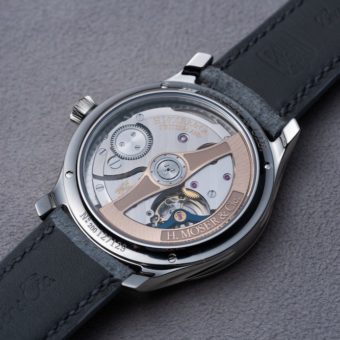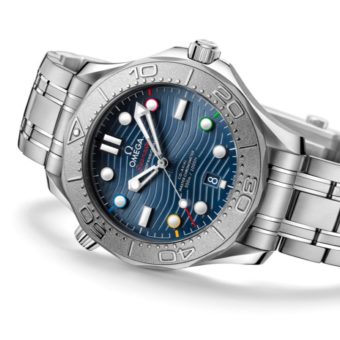Raymond Weil has always had a knack for making watches that have something different. They love to play with details and are not afraid to plot their own course. This is also clearly visible with the new Freelancer Automatic Bi-Compax Chronograph, which offers an exciting combination of materials and colors. The case has a titanium middle segment and a screw-down caseback, but the bezel is made from bronze, as are the crown and pushers. The color of the bronze details softens the technical look of the brushed titanium and sets the stage for the contemporary vintage look Raymond Weil is aiming for. I know that this is an oxymoron, but it is the best way to describe the Freelancer Automatic Bi-Compax Chronograph.
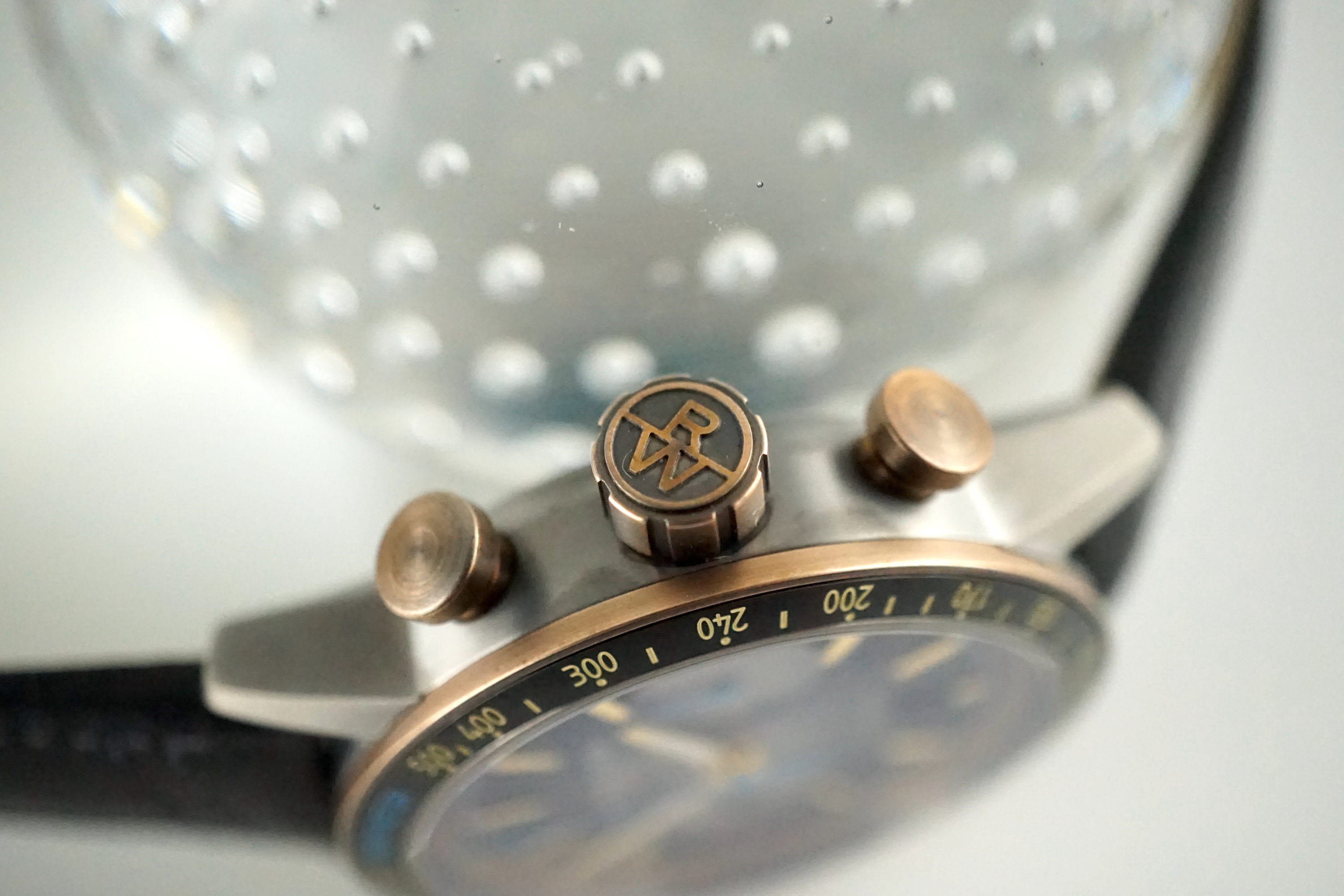
Raymond Weil fitted the bronze bezel with a ceramic insert showing a tachymeter scale. The flange on the inside, going towards the dial, has a pulsometer scale. This makes it quite a practical chronograph, although being bi-compax it means that an hour counter is missing. While some might miss this feature, the two subdials make for a less crowded and much more appealing design. Both the subdials are sunken in a bit and have the same color as the center of the dial. Raymond Weil opted to give it a gradient effect, moving to black on the rim of the dial, the same color as the ceramic bezel. The flange is, however, bronze colored. This is a clever move by Raymond Weil as it brings unity in the design in a more exciting way, yet also makes the pulsometer scale very easy to read.
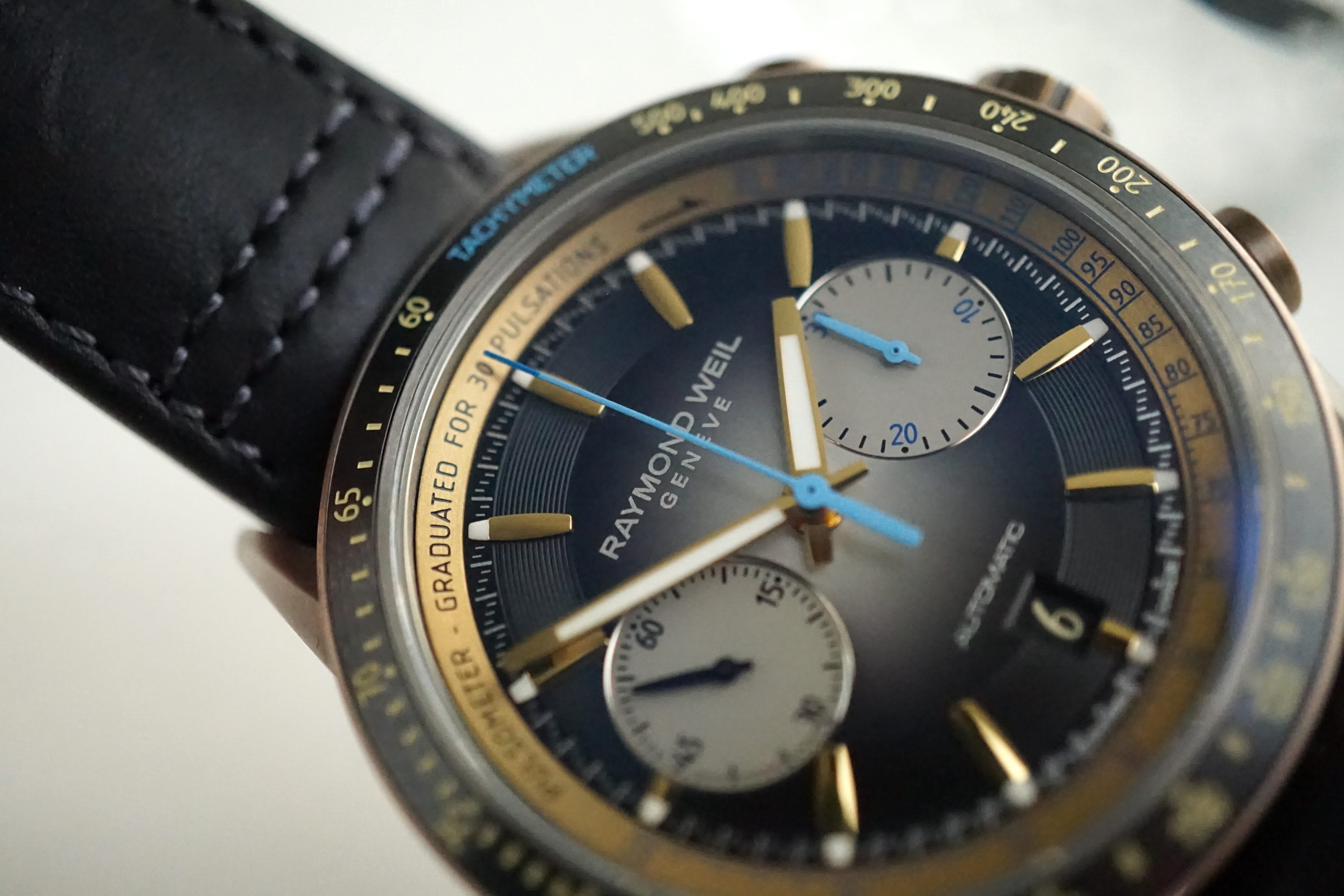
The watch looks and feels rather expensive, and that is not only because of the materials used, but also by the details incorporated in this timepiece. The dial shows different textures, and the railroad track looks like a tone ladder. With that, it taps into the passion of the brand for music. When you make a good watch, you also have to make sure that it doesn’t become too serious. The baby blue chronograph’s seconds and minute hand accomplishes just that. While you may think they would look totally out of place, they lighten the Freelancer Automatic Bi-Compax Chronograph and prevent it from becoming too serious of a watch. The same with the date, visible through a window at six o’clock. Raymond Weil opted for fun, almost sketched numerals, which remind me a bit of the Omega Dynamic Chronograph from the 1990s.
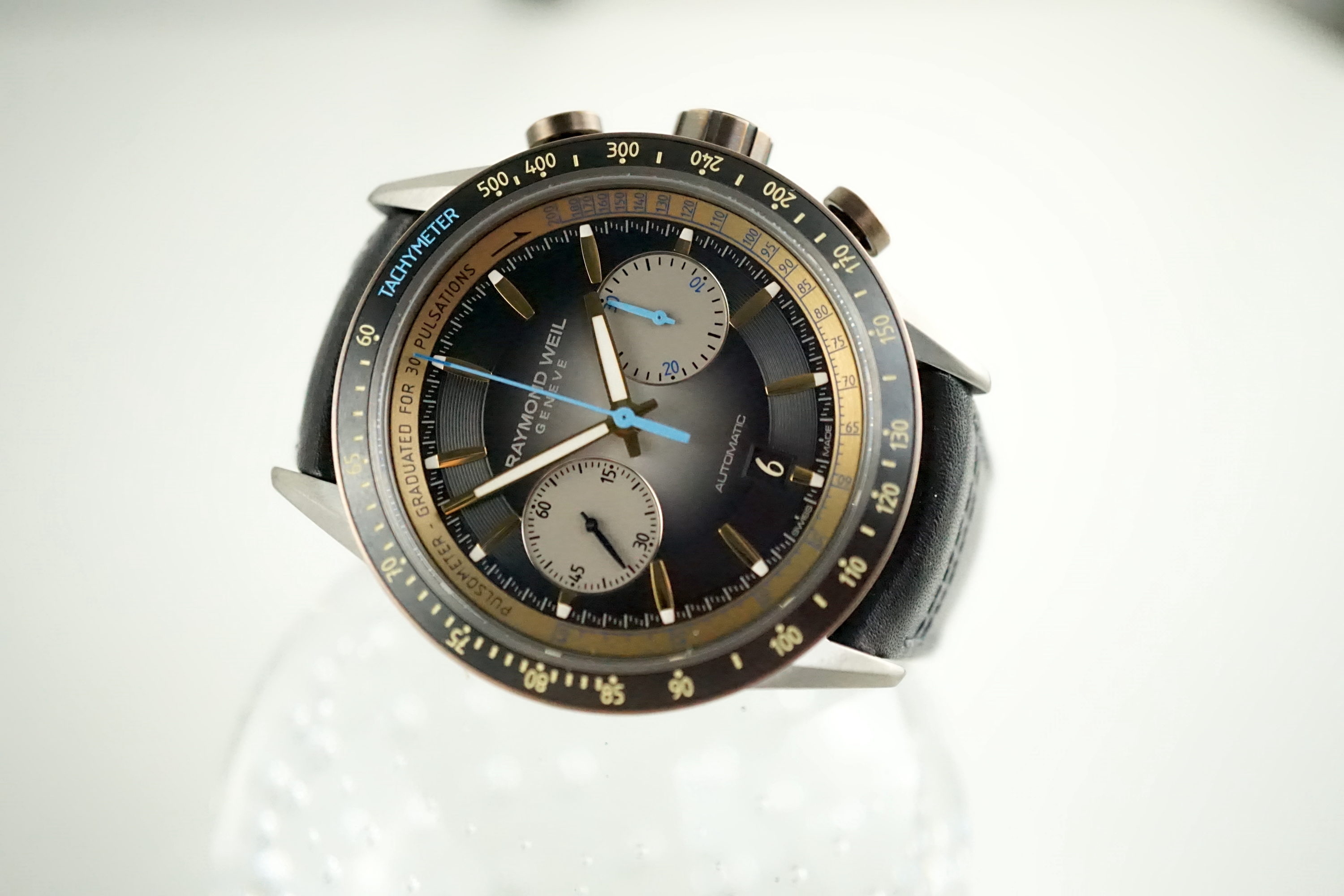
The most significant achievement of the Freelancer Automatic Bi-Compax Chronograph is perhaps how great it is at hiding its actual size. When I put it on for the first time, I suspected it to be around 42mm in diameter, while it is, in fact, 43.5mm. Thanks to the design of the lugs, it sits wonderfully on the wrist, although I would prefer the strap to be a bit thicker towards the case as it doesn’t fill the space between the lugs substantially enough. The clasp is also a thing of beauty, with the Raymond Weil logo at an angle, so it has a nice play of light. Like the case is also the clasp made from titanium.
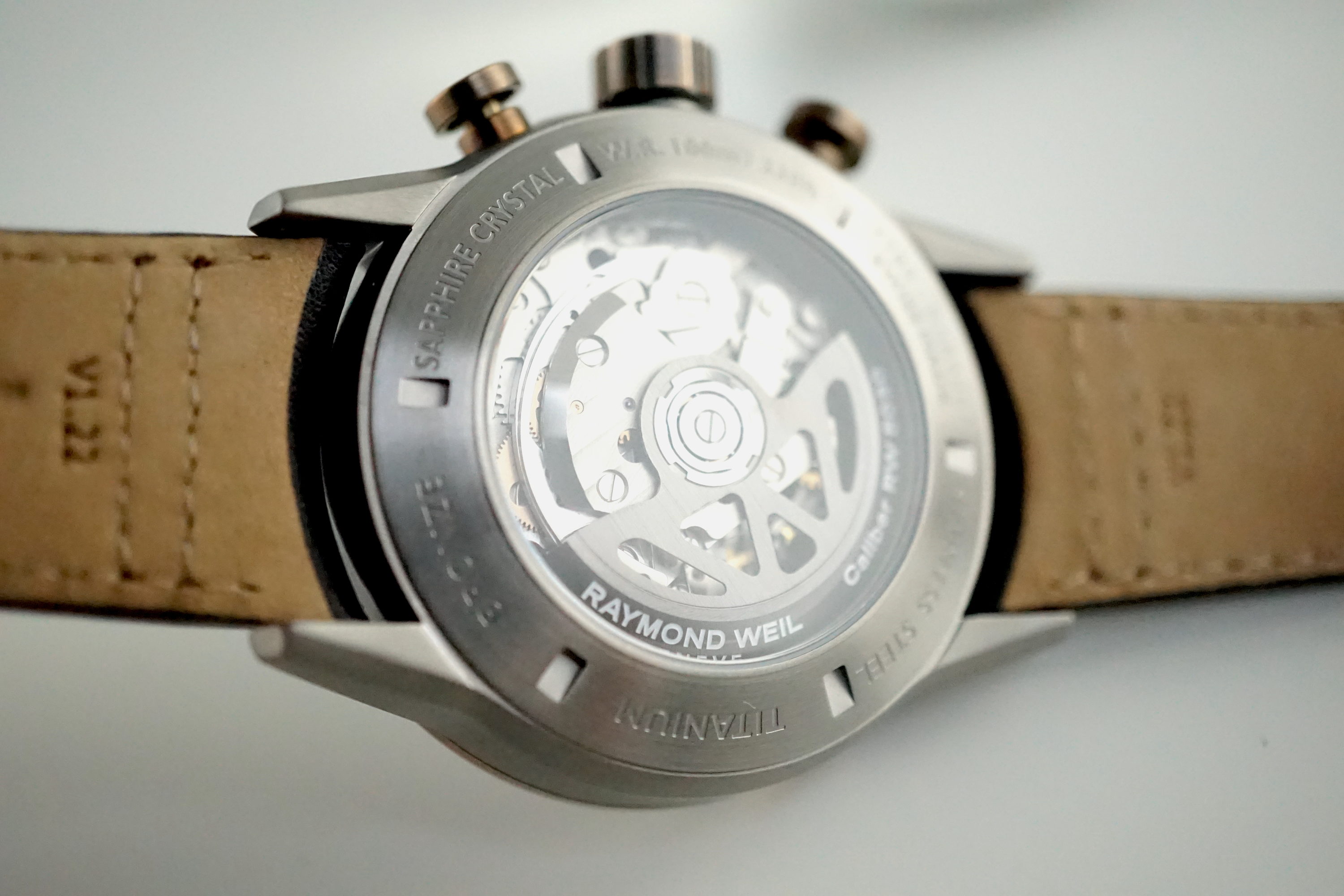
Inside the Raymond Weil ticks caliber RW5030, which is Sellita-based. It is visible through the exhibition caseback, giving me some mixed feelings. While the oscillating weight is nicely done, the finishing on the rest of the movement is simply not at the same level as the rest of the watch. That being said, it does come with a 56-hour power reserve and the watch is water resistant up to 10 ATM/100 meters. This makes the Raymond Weil Freelancer Automatic Bi-Compax Chronograph, which is priced at $4,025,-/GBP £3,495, a great allrounder with more than enough character to capture your interest and enthousiam, time after time.
For more info, visit Raymond Weil, here




